
Gators and tortoises, black bears and birds. From sun-drenched swamps to blooming mountain trails, Georgia State Parks provide an abundance of opportunities to connect with nature and witness wildlife in action.
This year the parks and their residents also are a viable alternative to Clarks Hill Lake, where some amenities are unavailable because of damage caused by Hurricane Helene. Guests can see snakes and turtles in many of the visitor centers as well, and park rangers present wildlife programs throughout the summer.
If there’s not enough time to see everything in a day trip, many parks offer accommodations for overnight stays. Whether guests prefer a cozy lakeside cabin, a fully equipped cottage, a group lodge or a peaceful campsite under the stars, there are options for every type of traveler. Camping areas include RV-friendly sites, walk-in tent campsites and yurts. plan your overnight adventure, visit GaStateParks.org/Reservations.
While some of these parks have been affected by Hurricane Helene, repairs are in progress and they are open for business. To plan an overnight adventure, visit GaStateParks.org/Reservations.
Gopher Tortoise Trek
Reed Bingham State Park, Adel
Warm-weather sunshine brings Georgia’s state reptile out of its burrow at Reed Bingham, and visitors can spot gopher tortoises moving slowly along sunlit trails. They can enjoy a guided paddle through the park’s cypress-lined 375-acre lake, where alligators and softshell turtles often make their first appearances of the season. Overnight stays in the campground let people experience the sounds of nature as night falls.
The lake also is popular with boaters and skiers, and fishing for bass, crappie, catfish and bream is excellent. Paddlers can rent canoes and kayaks to explore the lake, which is lined with fragrant water lilies and tupelo trees. Guided pontoon boat tours sometimes are offered during events.
The beachside pavilion, picnic shelters and group shelters are scenic spots for parties, reunions and other celebrations. Most trails have been re-opened as debris has been cleared. Damaged boardwalk sections remain closed as repairs continue. GaStateParks.org/ReedBingham
Black Bear Sightings
Fort Mountain State Park, Chatsworth
When wildflowers bloom across the North Georgia mountains, black bears become more active as they forage along wooded trails in Fort Mountain. For panoramic views, hikers can explore the park’s historic stone fire tower, which was built by the Civilian Conservation Corps, and an ancient rock wall. This mysterious 855-foot-long wall is thought to have been built by early Indians as fortification against more hostile Indians or for ancient ceremonies.
Some of the most beautiful trails in Georgia wind through the park’s hardwood forest and blueberry thickets. The trails cross streams and circle a lake, where visitors can cool off beachside during the summer. Horseback riding currently is unavailable due to trailhead access work.
Sitting at 2,850 ft above sea level, Fort Mountain is a great destination for hiking and history lessons alike. The area in and around the park was home to the Cherokee Indians for hundreds of years, and their legacy is still felt throughout North Georgia today. GaStateParks.org/FortMountain
Coastal Birding Hotspot
Crooked River State Park, St. Marys
With painted buntings, great egrets and ospreys in abundance, Crooked River is a must-see for birdwatchers. Visitors can enjoy the park’s bird blind and scenic salt marsh trails, and the park also is the perfect spot to enjoy the Intracoastal Waterway and maritime forest.
The park’s nature trail winds through forest and salt marsh, and hikers may see gopher tortoises, fiddler crabs, herons and other birds. A nature center features fish, snakes, turtles and other animals native to coastal Georgia. Visitors also can explore the nearby ruins of a tabby mill, built around 1825 and later used as a starch factory during the Civil War.
Campsites are surrounded by palmettos and Spanish moss-draped oaks, while cottages are set near the tidal river. A boat ramp is popular with anglers who often take to the water before sunrise. Just down the road is the ferry to the famous Cumberland Island National Seashore known for secluded beaches and wild horses. GaStateParks.org/CrookedRiver
Alligator Encounters
Laura S. Walker State Park, Waycross
Located near the northern edge of the mysterious Okefenokee Swamp, this park is home to fascinating creatures and plants, including alligators and carnivorous pitcher plants. Walking along the lake’s edge and nature trail, visitors also may spot a shy gopher tortoise, saw palmettos, yellow shafted flickers, warblers, owls and great blue herons.
The lake offers fishing, swimming and boating, and kayaks and bicycles are available for rent. The Lakes 18-hole golf course features a clubhouse, golf pro and junior/senior rates. Each fairway and landing area is defined with gentle, links-style mounds that accent the course’s three lakes.
While there is a lot to explore in the park, as of press time the Boardwalk on Big Creek Trail and Group Camp Cabin #10 remain closed until repairs can be made. Check GaStateParks.org/LauraSWalker for updates.
Hidden Birding Retreat
Panola Mountain State Park, Stockbridge
Just outside Atlanta, Panola Mountain offers a summertime escape with its “Power of Flight” area that attracts colorful songbirds like indigo buntings and yellow-throated warblers. Visitors can picnic while children work off energy on the playground. The park also offers archery, geocaching, orienteering and birding programs. A paved trail is open for biking, roller blading, jogging and dog-walking, while forested fitness trails attract hikers and runners.
Designated as a National Natural Landmark, Panola Mountain is a 100-acre granite outcrop similar to Stone Mountain but smaller and more pristine. Park visitors will see the outcrop and its rare ecosystem just as Native Americans did centuries ago. Ranger-led hikes teach about the rare plants and animals found in this habitat, but reservations are required.
With its unusual natural beauty and intriguing cultural changes, this park is the crown jewel of the Arabia Mountain National Heritage Area, one of only three National Heritage Areas in the state. Through the years, this area has been home to early settlers, immigrant rock cutters, freed slaves and even Trappist monks. Arabia Mountain National Heritage Area is a partnership among the state of Georgia; DeKalb, Henry and Rockdale counties; the Monastery of the Holy Spirit; numerous communities and public-private partners. GaStateParks.org/PanolaMountain
Deer and Wildflower Meadows
Hard Labor Creek State Park, Rutledge
When the meadows of Hard Labor Creek are painted in bright hues, they become a prime location for spotting grazing deer in the golden light of dusk. Listed on the National Register of Historic Places, Hard Labor Creek also offers a wide range of recreational opportunities in a wooded setting. Visitors can explore the tranquil Brantley Trail or enjoy a quiet paddle on Lake Rutledge.
A lakeside beach is popular with swimmers during summer months, and more than 24 miles of trails are available for hikers and horseback riders. Horse owners even have their own private camping area near stalls. With so many ways to relax, it is ironic that the park’s name is thought to come from slaves who tilled summer fields or American Indians who found the creek difficult to cross.
Located between Madison and Covington off I-20, The Creek Golf Course provides one of Georgia’s best golf values, along with a pro shop, driving range, rental carts and special rates for seniors and children. The 18-hole course is a favorite for its challenging layout and well-maintained greens in a pristine, natural setting.
As of press time, the beach bathrooms are under renovation, but temporary restrooms are available nearby. GaStateParks.org/HardLaborCreek.
By Morgan Davis
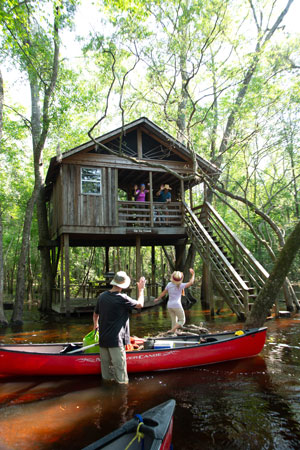
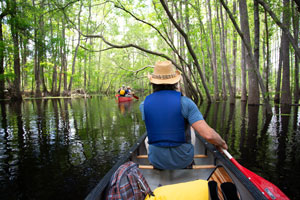
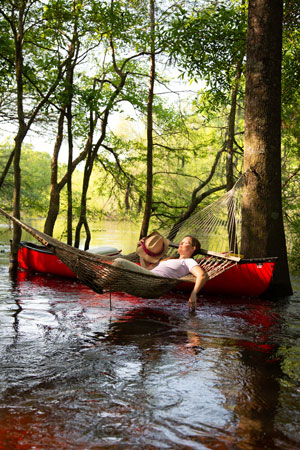
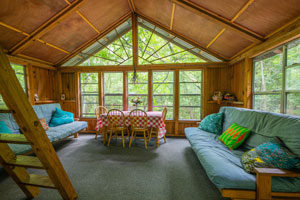
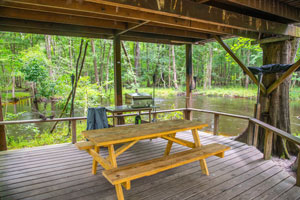
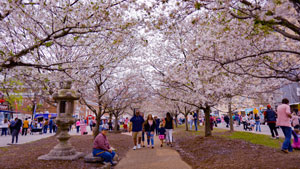
 Family Fun
Family Fun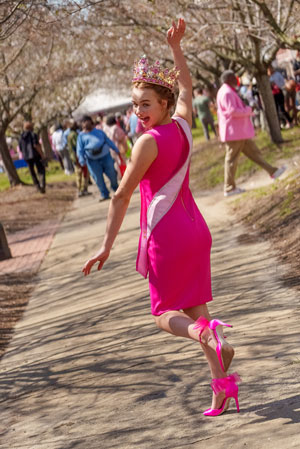 “When you come to Macon, you will see a lot of pink,” Theus says. “We call ourselves ‘The Pinkest Party on Earth.’”
“When you come to Macon, you will see a lot of pink,” Theus says. “We call ourselves ‘The Pinkest Party on Earth.’” The Wiener Dog Race features 50 dachshunds, clad in pink outfits as they dash to the finish line. Afterward, visitors can watch the Ultimate Air Dog Dock Diving Competition or Musical Chairs, which is played by local dignitaries wearing inflatable animal costumes.
The Wiener Dog Race features 50 dachshunds, clad in pink outfits as they dash to the finish line. Afterward, visitors can watch the Ultimate Air Dog Dock Diving Competition or Musical Chairs, which is played by local dignitaries wearing inflatable animal costumes. During the week, festival-goers gather at Third Street Park to listen to music and enjoy free ice cream and Coca-Cola products.
During the week, festival-goers gather at Third Street Park to listen to music and enjoy free ice cream and Coca-Cola products. Midway rides, concerts and food in Carolyn Crayton Park, which is named in honor of the festival founder, span the event’s full 10 days. Admission is $10, but children under 10 are admitted for free. Hours vary, and a clear bag policy is enforced.
Midway rides, concerts and food in Carolyn Crayton Park, which is named in honor of the festival founder, span the event’s full 10 days. Admission is $10, but children under 10 are admitted for free. Hours vary, and a clear bag policy is enforced. Growing in Numbers
Growing in Numbers


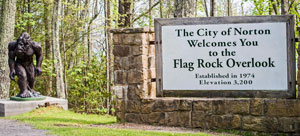
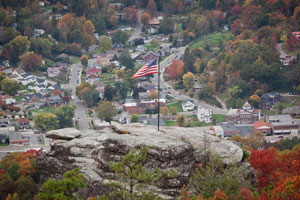
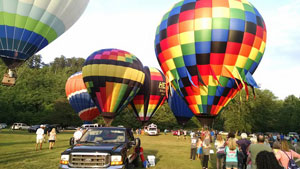
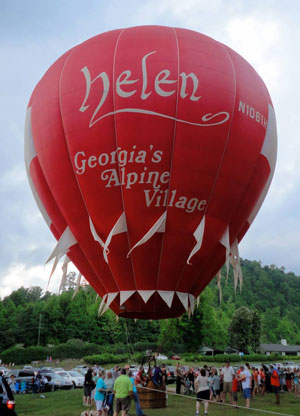
 While the race begins in the Alpine village in the North Georgia mountains, the finish line is Interstate-95. The actual end point is fluid, however, as balloons can reach their destination anywhere between Maine and Miami. The winner is the first person to cross I-95, or whoever is ahead at sunset on Friday, May 31.
While the race begins in the Alpine village in the North Georgia mountains, the finish line is Interstate-95. The actual end point is fluid, however, as balloons can reach their destination anywhere between Maine and Miami. The winner is the first person to cross I-95, or whoever is ahead at sunset on Friday, May 31.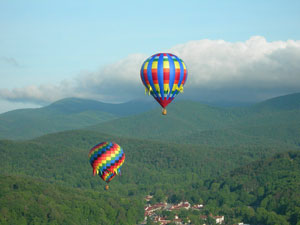 In addition to the overhead views, attractions of ballooning include the exceptional quiet (except when the propane burners are firing) and the lack of a feeling of movement. Since balloons move with the direction of the wind, passengers don’t feel the wind other than brief periods when the balloon climbs or descends into air currents of different direction or speed.
In addition to the overhead views, attractions of ballooning include the exceptional quiet (except when the propane burners are firing) and the lack of a feeling of movement. Since balloons move with the direction of the wind, passengers don’t feel the wind other than brief periods when the balloon climbs or descends into air currents of different direction or speed.
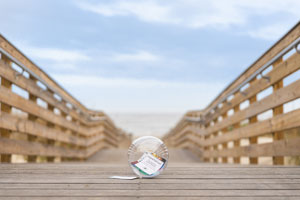



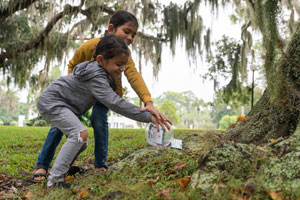


 Cars, vans and trucks travel through light displays featuring a forest of Christmas trees and other scenes, as thousands of lights have been added, reconfigured and redesigned this year. A brand new concourse has been added as well.
Cars, vans and trucks travel through light displays featuring a forest of Christmas trees and other scenes, as thousands of lights have been added, reconfigured and redesigned this year. A brand new concourse has been added as well. Pit Stop
Pit Stop In addition, visitors of all ages can enjoy a new four-lane sledding/tubing hill in front of Charlotte Motor Speedway from 6 p.m. until 10 p.m. Thursday through Sunday, excluding Christmas Eve, until January 7. Offering unlimited one-day rides, these tickets are $20 per person for light show visitors and $25 per person for others.
In addition, visitors of all ages can enjoy a new four-lane sledding/tubing hill in front of Charlotte Motor Speedway from 6 p.m. until 10 p.m. Thursday through Sunday, excluding Christmas Eve, until January 7. Offering unlimited one-day rides, these tickets are $20 per person for light show visitors and $25 per person for others. Snowland and Sea Life
Snowland and Sea Life From Friday, December 1 through Monday, January 1, the interactive aquarium will feature the Sea of Lights, an underwater holiday experience with thousands of holiday lights and more than 30 decorated Christmas trees. The aquarium also includes a 180-degree ocean tunnel where tropical sharks and graceful rays glide overhead.
From Friday, December 1 through Monday, January 1, the interactive aquarium will feature the Sea of Lights, an underwater holiday experience with thousands of holiday lights and more than 30 decorated Christmas trees. The aquarium also includes a 180-degree ocean tunnel where tropical sharks and graceful rays glide overhead.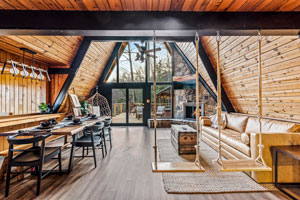
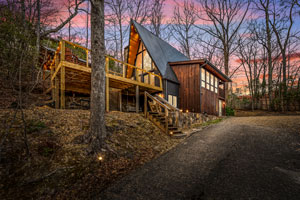 This A-frame Airbnb gets an A-plus for its cozy mountain vibe.
This A-frame Airbnb gets an A-plus for its cozy mountain vibe.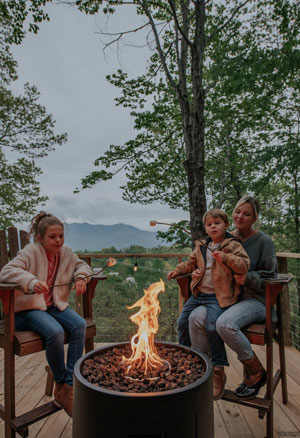 Moody, Mountain Ambiance
Moody, Mountain Ambiance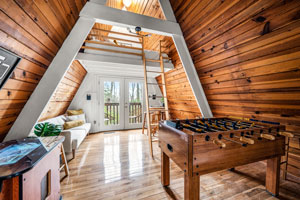 While the spa room originally was open, they enclosed it for privacy and added a shower and a Jacuzzi.
While the spa room originally was open, they enclosed it for privacy and added a shower and a Jacuzzi.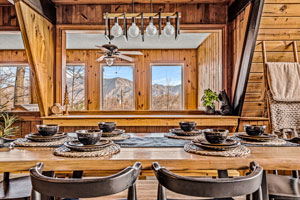 They named the cabin “Ohana,” a Hawaiian word for “family,” after they stayed at an Airbnb with the same name in New Zealand.
They named the cabin “Ohana,” a Hawaiian word for “family,” after they stayed at an Airbnb with the same name in New Zealand.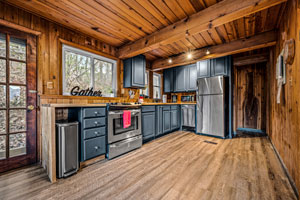 Those who are content to hang out at Ohana can savor the seclusion.
Those who are content to hang out at Ohana can savor the seclusion.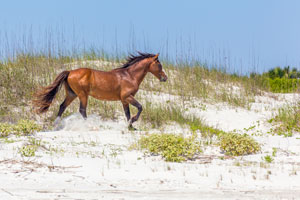
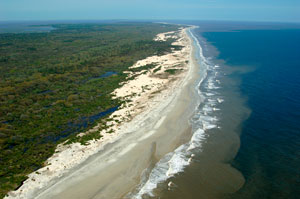
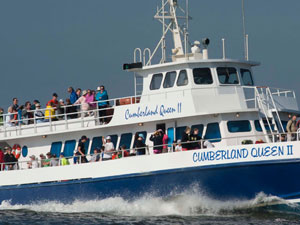 And getting there is half the fun. The Cumberland Island Ferry departs from the dock adjacent to the Cumberland Island National Seashore Visitor Center in Saint Marys, Georgia for a 45-minute trip to the island’s Sea Camp dock. The ferry operates daily March 1 – November 30 and Thursday – Monday December 1 through February 28. Face coverings are required.
And getting there is half the fun. The Cumberland Island Ferry departs from the dock adjacent to the Cumberland Island National Seashore Visitor Center in Saint Marys, Georgia for a 45-minute trip to the island’s Sea Camp dock. The ferry operates daily March 1 – November 30 and Thursday – Monday December 1 through February 28. Face coverings are required.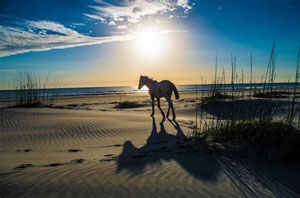 When you spot wild horses, remember to give them the right-of-way and to stay at least 50 feet away from them for your own safety. If a horse changes its behavior because of your presence, then you’re too close. And never try to pet or feed them.
When you spot wild horses, remember to give them the right-of-way and to stay at least 50 feet away from them for your own safety. If a horse changes its behavior because of your presence, then you’re too close. And never try to pet or feed them.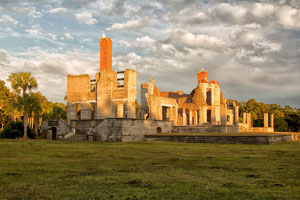 One of the best ways to explore Cumberland Island is by guided tour. The Land and Legacies Tours, which can be booked online at cumberlandislandferry.com, uncover centuries of history in just a few hours. This motorized tour, which costs $45 per person and begins at the Sea Camp dock, should be booked along with the ferry trip to the island.
One of the best ways to explore Cumberland Island is by guided tour. The Land and Legacies Tours, which can be booked online at cumberlandislandferry.com, uncover centuries of history in just a few hours. This motorized tour, which costs $45 per person and begins at the Sea Camp dock, should be booked along with the ferry trip to the island.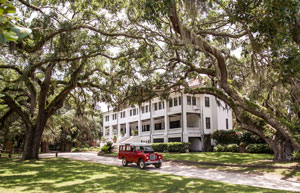 First African Baptist Church, located about 17 miles from the Sea Camp dock, was established in 1893 by African American residents of the island and rebuilt in the 1930s. This unassuming one-room church served as a free place of worship and community center for the north end community known as the Settlement. In addition, the church was the site of the secret September 1996 wedding of John F. Kennedy Jr. and Carolyn Bessette.
First African Baptist Church, located about 17 miles from the Sea Camp dock, was established in 1893 by African American residents of the island and rebuilt in the 1930s. This unassuming one-room church served as a free place of worship and community center for the north end community known as the Settlement. In addition, the church was the site of the secret September 1996 wedding of John F. Kennedy Jr. and Carolyn Bessette.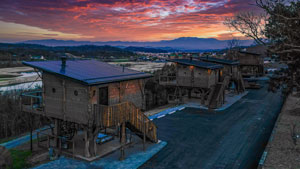
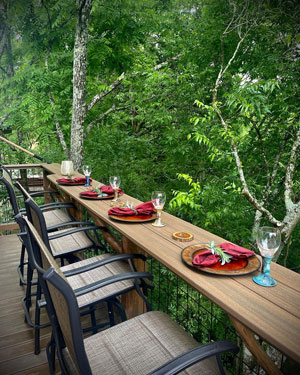 Porches are simultaneously havens and playgrounds with swinging chairs, suspended outdoor daybeds, outdoor tubs, rope climbs, big-screen TVs and more. Decks encourage relaxation with wood-burning fireplaces, gas grills, Adirondack chairs and spectacular views.
Porches are simultaneously havens and playgrounds with swinging chairs, suspended outdoor daybeds, outdoor tubs, rope climbs, big-screen TVs and more. Decks encourage relaxation with wood-burning fireplaces, gas grills, Adirondack chairs and spectacular views.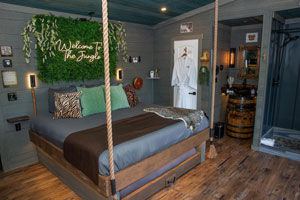 Branching Out
Branching Out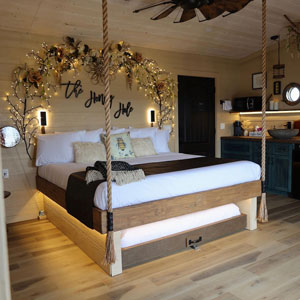 “Brian and his team built the first phase, but we’ll now hire a construction company to build them more quickly while we focus on amenities,” says Amanda.
“Brian and his team built the first phase, but we’ll now hire a construction company to build them more quickly while we focus on amenities,” says Amanda.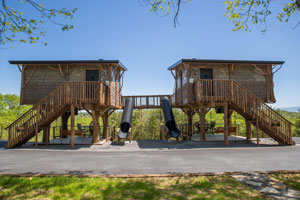 The scope of their treehouse resort idea quickly “took on a life of its own,” she says.
The scope of their treehouse resort idea quickly “took on a life of its own,” she says.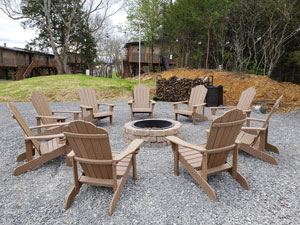 “We want guests to have the best views, and at the same time, don’t want to litter the mountainside so it’s beautiful at night from below. The number one priority is to disturb the property as little as possible.”
“We want guests to have the best views, and at the same time, don’t want to litter the mountainside so it’s beautiful at night from below. The number one priority is to disturb the property as little as possible.” 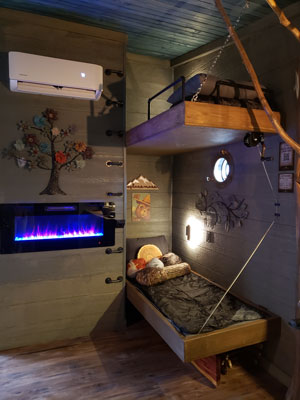 If You Go
If You Go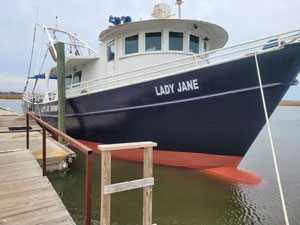
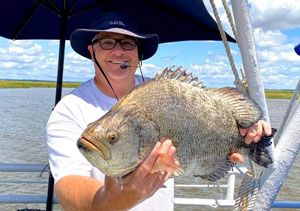
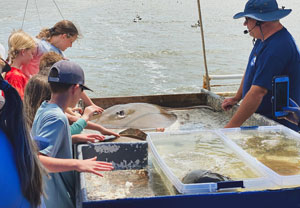
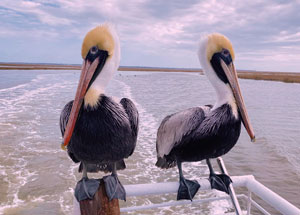
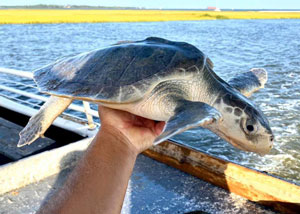
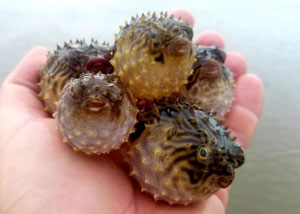

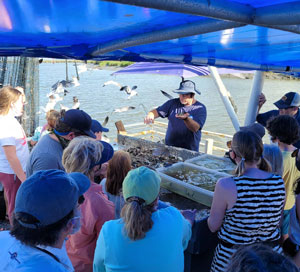

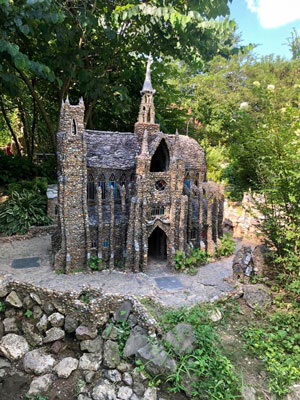
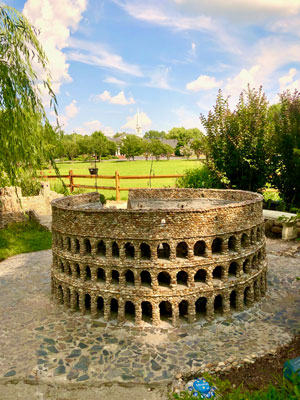
 Some of the other constructions have religious themes as well, and some places have scriptures inscribed in walkways or walls. The Ten Commandments tablets are embedded, broken, in one of the walkways.
Some of the other constructions have religious themes as well, and some places have scriptures inscribed in walkways or walls. The Ten Commandments tablets are embedded, broken, in one of the walkways.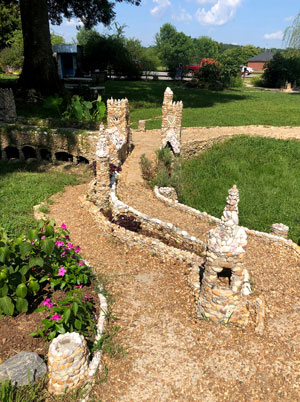 In 2007, the self-described “scoundrel” started the rock garden to keep himself “out of trouble.” Later, his wife, Joyce, joined him in his efforts, and she started building most of the structures in 2014 while he concentrated on the porcelain figures. The couple has since moved to Mississippi, but their children and 20-30 grandchildren have carried on the tradition.
In 2007, the self-described “scoundrel” started the rock garden to keep himself “out of trouble.” Later, his wife, Joyce, joined him in his efforts, and she started building most of the structures in 2014 while he concentrated on the porcelain figures. The couple has since moved to Mississippi, but their children and 20-30 grandchildren have carried on the tradition.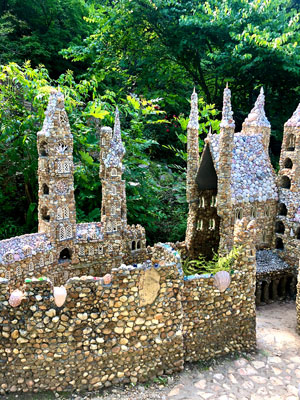 Depending on the season, garden flowers include roses, hydrangeas, clematis, ferns and hostas. In addition, visitors can walk on a shady, 1-mile, unpaved trail behind the garden. The trail runs along a creek, up a steep hill and down the other side to the opposite side of the garden.
Depending on the season, garden flowers include roses, hydrangeas, clematis, ferns and hostas. In addition, visitors can walk on a shady, 1-mile, unpaved trail behind the garden. The trail runs along a creek, up a steep hill and down the other side to the opposite side of the garden.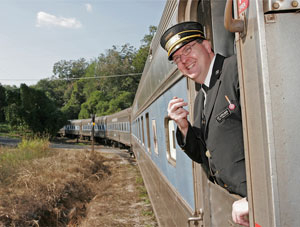
 Trail 1
Trail 1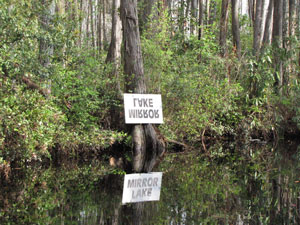 Trail 1 is about much more than food, however. Okefenokee Swamp Park transports visitors to prehistoric environs where alligators and rare birds roam among carnivorous plants and lily-decked water trails.
Trail 1 is about much more than food, however. Okefenokee Swamp Park transports visitors to prehistoric environs where alligators and rare birds roam among carnivorous plants and lily-decked water trails. At the historically significant Kolomoki Mounds State Park, visitors can see the oldest and largest Woodland Indian site in the southeastern United States, occupied by Indians from 350 to 750 A.D. Standing 57 feet high, the state’s oldest great temple mound dominates two smaller burial mounds and several ceremonial mounds. Kolomoki Mounds also offers outdoor activities such as fishing, boating, camping and hiking.
At the historically significant Kolomoki Mounds State Park, visitors can see the oldest and largest Woodland Indian site in the southeastern United States, occupied by Indians from 350 to 750 A.D. Standing 57 feet high, the state’s oldest great temple mound dominates two smaller burial mounds and several ceremonial mounds. Kolomoki Mounds also offers outdoor activities such as fishing, boating, camping and hiking.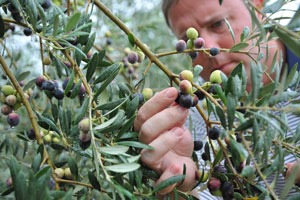 “Trail 37 is the most unadulterated one, and all of the attractions relate to agritourism,” says Connell.
“Trail 37 is the most unadulterated one, and all of the attractions relate to agritourism,” says Connell.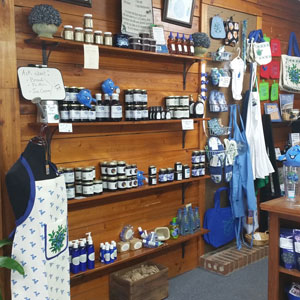 The Georgia State Cotton Museum occupies a 125-year-old school house in the eastern part of Vienna, between historic downtown and I-75.
The Georgia State Cotton Museum occupies a 125-year-old school house in the eastern part of Vienna, between historic downtown and I-75.